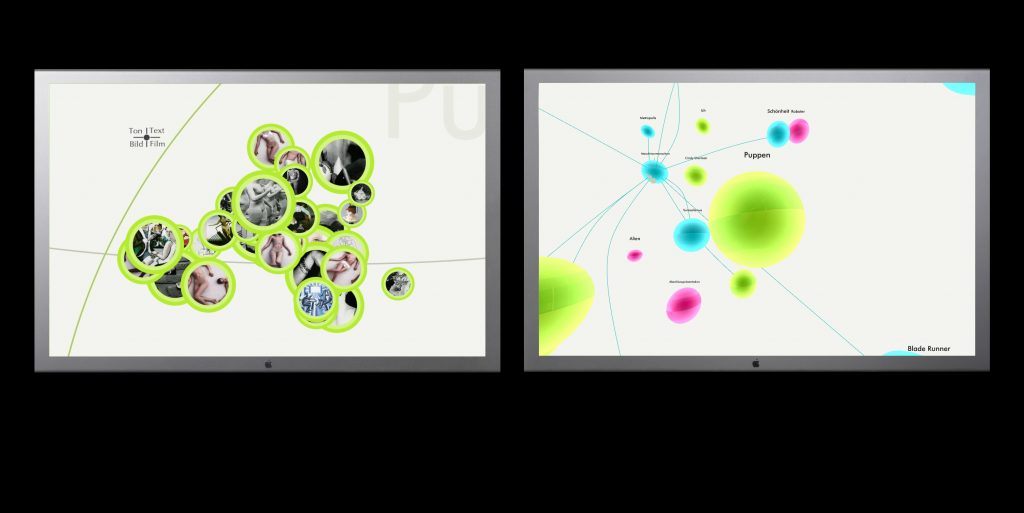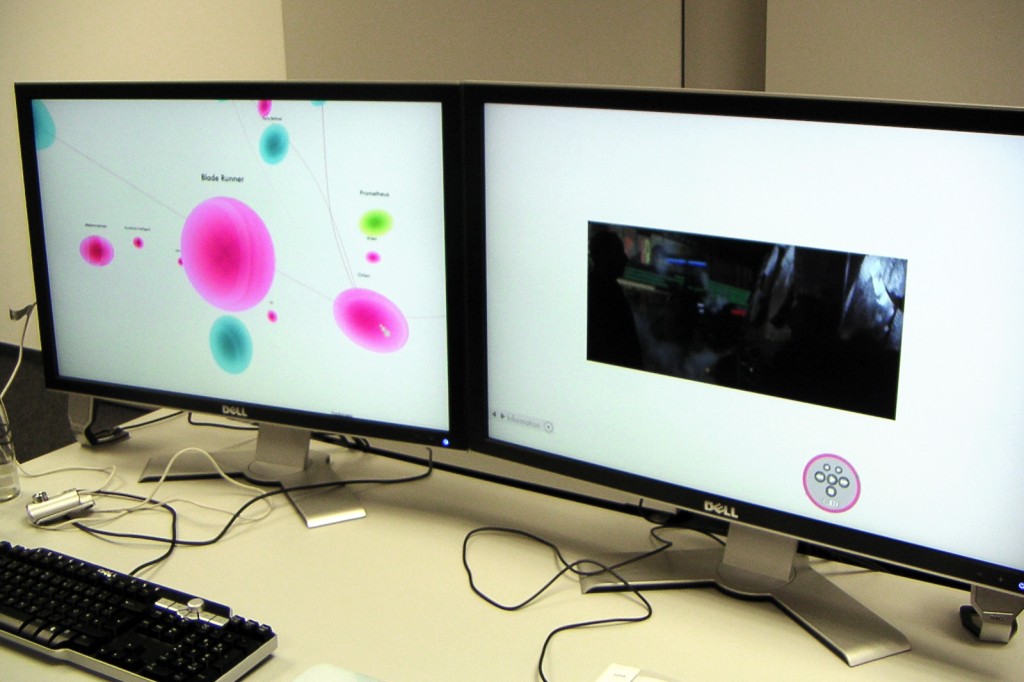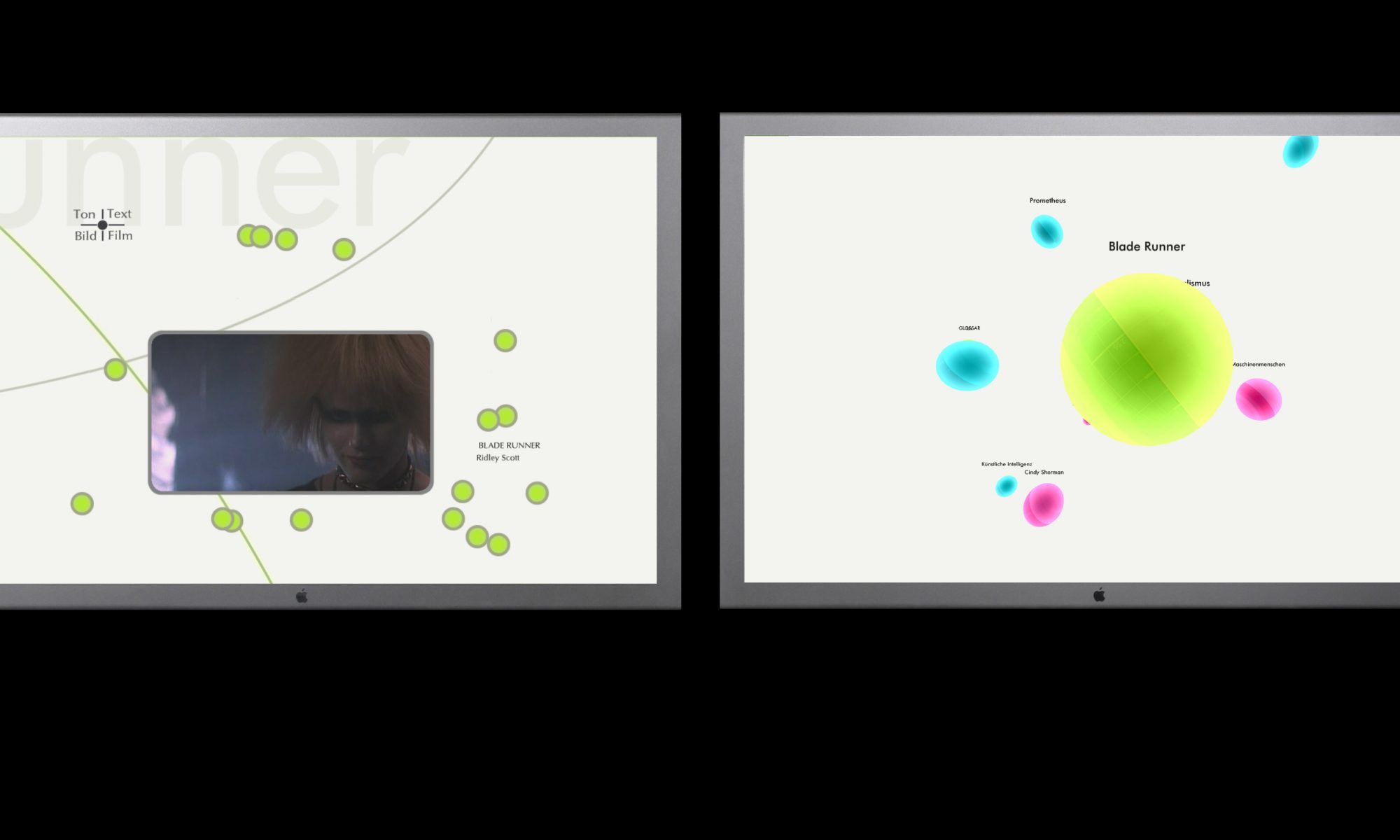Ein dichotomisches Projekt auf zwei HD-Bildschirmen. Interaktive Wissensreise in 2D und 3D durch das Thema: Künstliche Menschen, Metamorphose, Selbstbildnisse, Spiegelbilder. Scharnier ist der Film „Blade Runner“ von Ridley Scott, USA 1981. Ausgehend von Filmsequenzen und Standbildern kommt man zu unterschiedlichen Themen und Inhalten, die in dem Film eine Rolle spielen.
Das Projekt wurde öffentlich präsentiert:
- Konferenz „Film, Visualisation, Narrative“ am 17. November 2006 an der Royal Holloway, University of London.
- TIDSE 2006, 3rd International Conference on Technologies for Interactive Digital Storytelling and Entertainment in Darmstadt.

Realisation: Robin Fritze, Elisabeth Herwig, André Kleine, Ines Oppermann, Stefan Schaaf, Cordula Stingl und Stephan Streuber.
Betreuenden Professoren: Prof. Martin Kreyßig, Prof. Holger Reckter, Prof. Dr. Christian Geiger.
Inhalt im Detail: Dichotomisches Projekt auf zwei Bildschirmen. Interaktive Wissensreise in 2D und 3D durch das Thema: Künstliche Menschen, Metamorphose, Selbstbildnisse, Spiegelbilder.
Scharnier ist der Film „Blade Runner“, USA 1981 von Ridley Scott. Ausgehend von Filmsequenzen und Standbildern kommt man zu unterschiedlichen Stoffen … Von der zentralen Plattform „Blade Runner“ aus lassen sich wie auf einer Kugel verteilt neuronale Knoten erreichen. Die visuelle Präsentation leitet über eine gebogene imaginäre Erdoberfläche und führt zu diesen neuronalen Containern. Hier sind Photos hinterlegt, Texte eingelassen, Archive angelegt, die durchmessen werden können. Grundkonzept ist eine Welt, auf der neuronale Gebäude errichtet werden können – Container für inhaltlich abgegrenzte Bereiche – die miteinander verknüpft sind. Der Nutzer kann diese Welt bereisen und einzelne Gebäude betreten. Aus den Inhalten eines Containers heraus kann der Nutzer zu anderen Containern gelangen.
Die Container bergen zu abgegrenzten Wissensgebieten Inhalte in textlicher, bildlicher, filmischer und akustischer Form. Die beiden Bildschirme (oder Beamer) zeigen immer ein entweder ganzheitliches oder dichotomisches Bild. Entsprechend der inhaltlichen Fokussierung auf künstliche Wesen versus Mensch sind dies Spiegelbilder, Gegenüberstellungen, Schuss-Gegenschuss-Formate oder aber Bild-Text-Formate.









